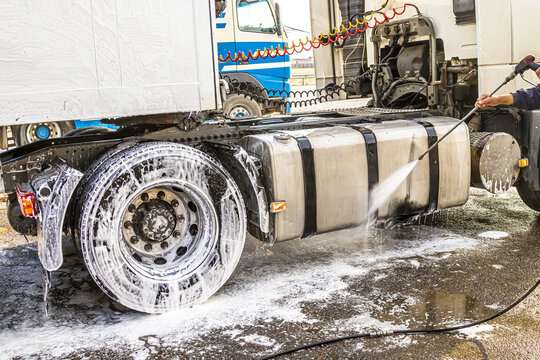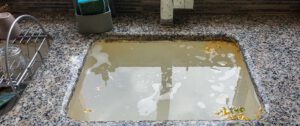Whether it’s protecting your home against a burglary or your business against a liability claim, security cameras can be vital in providing evidence. Footage can also help settle disputes, domestic or professional.
Depending on your needs, you can opt for wired or wireless security cameras. The latter offers more flexibility as you can view footage remotely. For more information, click the link https://visiondetectionsystems.com/ provided to proceed.

Security cameras can help protect businesses, property, inventory, and onsite equipment by detecting intruders before they cause damage. They are also excellent deterrents to crime as they alert would-be thieves and vandals that they are being watched, which can often cause them to turn away or change their plans.
Most security cameras use motion-sensing technology to record footage or take pictures when they detect a potential threat. They can be either wired or wireless, with the latter option allowing for more convenient installation. The data from these cameras is typically stored on a hard drive for easy access and viewing. This data can also be streamed over a secure network to a remote location, which allows for monitoring through mobile devices.
Some surveillance cameras are equipped with face recognition software that can scan faces and compare them to criminal mugshots, making it easier for police to identify suspects. This technology is becoming increasingly popular and is even available on some consumer electronics, such as smart TVs. However, there are concerns about the ethical and privacy implications of this type of technology. Many jurisdictions have begun to regulate the use of facial recognition systems, requiring clear signage and limiting its scope to certain situations.
When a security camera detects an intruder, it may be able to trigger a loud noise or a prerecorded audio warning that can scare off the unwanted visitor. Some systems are able to automatically call the police or notify a designated contact to handle the situation. Others can use GPS to locate the exact area where an intruder has been detected, allowing for pan, tilt, and zoom (PTZ) cameras to be directed toward the threat and locked on it until it is safely mitigated.
The footage captured by a security camera can be very helpful when submitting insurance claims to cover damage caused by intruders. The clarity and detail that these cameras provide are a major advantage over traditional CCTV, which only produces grainy video images that are often unusable in a court of law.
The detection of fire is a priority for both businesses and homes, and security cameras can play an important role in this area as well. They are able to detect smoke in dark or low-light conditions when used with specialized sensors. Some models are even able to differentiate between smoke and heat. This helps to ensure that fire is detected at the very early stage, and thus minimises damage to property and people.
Integration of CCTV into fire monitoring systems is a rapidly growing trend. MOBOTIX thermal cameras in particular are ideally suited for this purpose. The cameras use thermal radiometry to reliably identify fire sources, even before they are visible to the human eye and at a distance of up to 60 meters. A renowned Austrian test centre has tested them for fire protection technology and PBST (Austrian Federal Fire Brigade Association), and are quad-certified to EN 54-10, VdS, CNPP, and PBST.
Video image smoke and fire detection (VISD, VIFD) is a method of detecting fires by using video cameras to monitor a space and transmit the footage to a computer. The computer then uses algorithms to look for smoke, and if any are found, an alarm is triggered. VSID can be used in a variety of applications, including waste management and recycling sites, where highly flammable material is collected, stored, and processed.
These types of systems typically require large cameras to cover a wide area, and their installation can be expensive. However, as the technology improves, costs are likely to fall.
Currently, most fire detection systems use neural networks to recognise patterns in images, and then apply rules to determine whether there is a fire. While this can be very effective, it has its limitations. For example, the system may not be able to tell whether a fire is occurring in a specific part of an image, and it may not be able to distinguish between flames and smoke.
A better solution is to use a flame detector camera, which can recognise the light emitted by a flame, and thus be more accurate in identifying when a fire is happening. These types of solutions are being developed by artificial intelligence companies and show great promise.
A security camera can be a valuable tool in the fight against floods, especially in cities where urban flooding is more common because of climate change and urbanization. The use of surveillance cameras is an efficient way to monitor surface flood levels without relying on expensive sensors. However, there are several challenges to using surveillance video for flood monitoring. First, the quality of the video is highly dependent on weather conditions and atmospheric visibility. For example, raindrops, fog, and illumination can all cause visual noise in the video that interferes with the extraction of flood-level trend information.
In addition, it is difficult to accurately distinguish between the foreground and background of a video frame. This problem is compounded by the fact that water reflects light, making it appear white in very agitated flows or muddy in low-water scenarios. Furthermore, the shape of the foreground and background can be highly variable because of the topography of the area or the positioning of the camera. Consequently, simple pixel intensity classification methods are not sufficient to precisely isolate the flood zone.
Nevertheless, there are several ways to solve this challenge and provide an effective solution for the problem of detecting floods. For instance, a DCNN can be trained to detect the presence of floodwater in surveillance videos. The resulting SOFI signal can be used to determine the fraction of the foreground and background covered by floodwater in each video frame. This information can be used to extract the flood level trend, which can then be used to predict the occurrence of an inundation.
As a result, this approach can be used to detect an inundation before it occurs and warn residents before it affects them. Additionally, it can be used to prevent damage to property and minimize loss of life. It can also be used to assess the impact of a flood on an urban area and help governments plan and prepare accordingly.
In addition, this approach is more practical than a traditional method because it doesn’t require a precise setting of the foreground and background seed points. This is important because it allows the system to detect flooding even if the original seed point is not in a possible flood region.
Carbon Monoxide is a deadly gas that can cause severe illness and even death. Many home security systems can be connected to sensors that detect high levels of carbon monoxide in a house, alerting the homeowner to potentially dangerous conditions. These devices can also be tied into a smart home system, allowing homeowners to monitor these alarms remotely on their smartphones and tablets.
A smart CO detector can be used in conjunction with smoke detectors to provide additional safety. These devices are designed to detect the presence of carbon monoxide, a colorless, odorless gas. They can be set to sound off if they sense an abnormal amount of carbon monoxide over a specific period of time or if a sudden large increase in CO is detected. This can help to save lives and prevent injuries when carbon monoxide poisoning strikes.
When paired with a smart home security system, these sensors can be used to monitor for carbon monoxide outside of the house as well. This is especially important for homeowners who have children, elderly family members, or pets living alone in the house. It can be difficult for these individuals to monitor the status of their home and can lead to unnecessary panic if an unexpected event occurs. The ability to see what is happening in the home from afar can alleviate some of this stress and allow owners to feel confident that their loved ones are safe when they’re not at home.
A hidden camera disguised as a carbon monoxide detector can be the ideal solution for this concern. This device is designed to plug directly into a wall outlet and can be ordered with the camera aimed straight-out the face (for higher wall outlets) or angled upwards (for lower wall outlets). It has an SD card slot for recording, night vision capabilities and can be viewed live on any smartphone, tablet, or computer.
A smart CO detector can be a powerful addition to your home security system. It can give you peace of mind when you’re away from home, and it can help to prevent tragedies like the one that happened to the Barbee family. This family nearly died from unintentional carbon monoxide poisoning. Fortunately, their CPI Security CO detector alerted them and the local West Stanly fire department to their danger, and the family was able to get out of their home safely.







 If you are thinking about doing a kitchen restoration, there are several important things to consider before starting your project. These factors include the cost, time frame, permits, and environmental friendliness. This article will provide tips to make your Kitchen Restoration as successful as possible. Moreover, you will learn how to maximize your budget by choosing a contractor that will exceed your expectations. This article will cover the top five reasons why you should consider hiring a professional for your project. To learn more, click here
If you are thinking about doing a kitchen restoration, there are several important things to consider before starting your project. These factors include the cost, time frame, permits, and environmental friendliness. This article will provide tips to make your Kitchen Restoration as successful as possible. Moreover, you will learn how to maximize your budget by choosing a contractor that will exceed your expectations. This article will cover the top five reasons why you should consider hiring a professional for your project. To learn more, click here 
